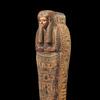Corning Museum of Glass to Open Groundbreaking Exhibition 'In Sparkling Company' on May 22
- March 23, 2021 16:02

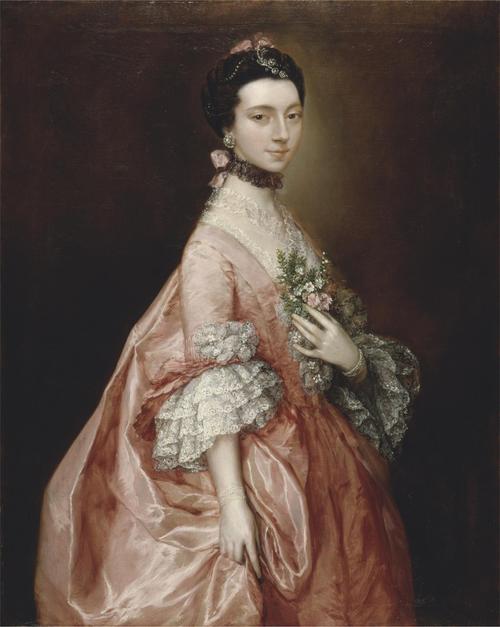
On May 22, The Corning Museum of Glass (CMoG) will open the groundbreaking exhibition In Sparkling Company: Glass and the Costs of Social Life in Britain During the 1700s. Presenting the glass objects that delighted the British elite, the exhibition examines how those goods defined social rituals and cultural values of the period, while also illuminating a darker side of history—how the British upper class benefitted from enslaved and indentured labor to create and pay for their glittering costumes and jewelry, elaborate tableware, polished mirrors, and dazzling lighting devices. The exhibition is organized by Christopher L. Maxwell, Curator of Early Modern Glass at CMoG, and will be on view through January 2022.
“In Sparkling Company will demonstrate the many functions and meanings of glass in 18th-century social life,” said Maxwell. “For those who aspired to be part of the polite world, glass objects presented an opportunity to demonstrate modernity, taste, and discernment in a social context. Many of these glass consumer goods were new to the market in the 1700s and consequently offer trenchant insights into the social, cultural, and political values period.”
In the 1700s Britain was a prosperous and commercial nation. Its growing cities were hubs of industry, scientific advancement, trade and finance, and its colonies were expanding. British merchants navigated the globe carrying a multitude of cargoes: consumable, material, and human. Underpinning Britain’s prosperity was a far-reaching economy of enslavement, the profits of which funded the pleasures and innovations of the fashionable world, among them luxury glass. Alongside the beauty and innovation of glass during this period, the exhibition presents artifacts and documents relating to the slave trade, such as glass beads were traded for human lives while elegant glass dishes, baskets, and bowls held sweet delicacies made with sugar produced by enslaved labor in the British colonies.
“This exhibition considers the role of glass as a witness to the many changes of the 18th century and to the ways in which its material qualities (not just its presence) defined the social rituals, cultural values, and personal identities of the period,” said Corning Museum of Glass president Karol Wight. “Glass played a role in the earliest encounters with continents beyond Europe and in the too frequent exploitation of their natural resources. The wealth of the British society that wore sparkling costumes and used polished glass on its tables rested squarely on the shoulders of the people who worked to create this prosperity: enslaved and indentured humans, traders, seafarers, and military explorers.”
Nowhere was this prosperity on greater view than in domestic interiors, which were transformed by the increasing presence of clear and smooth plate glass. The exhibition will put on display newly conserved panels from the original Northumberland House Glass Drawing Room—on loan from the Victoria & Albert Museum—designed by the celebrated British architect Robert Adam for Hugh Percy, 1st Duke of Northumberland (1714-1786) and completed in 1775. In Sparkling Company will feature a virtual reality reconstruction of the entire drawing room, created by Irish production house Noho.
The smooth, ‘polished,’ and reflective properties of glass also perfectly embodied 18th-century ideals of sociability, in what is considered by many as the ‘age of politeness.’ As urban centers grew and prosperity, sociability became ever more sophisticated. The terms ‘polite’ and ‘polished’ were often used interchangeably in the numerous etiquette manuals eagerly read by those wishing to take their place in the polite world. Examples of such literature will be displayed alongside fashionable glass of the period. In Sparkling Company: Glass and the Costs of Social Life in Britain During the 1700s will include important examples of 18th Century British glass, including:
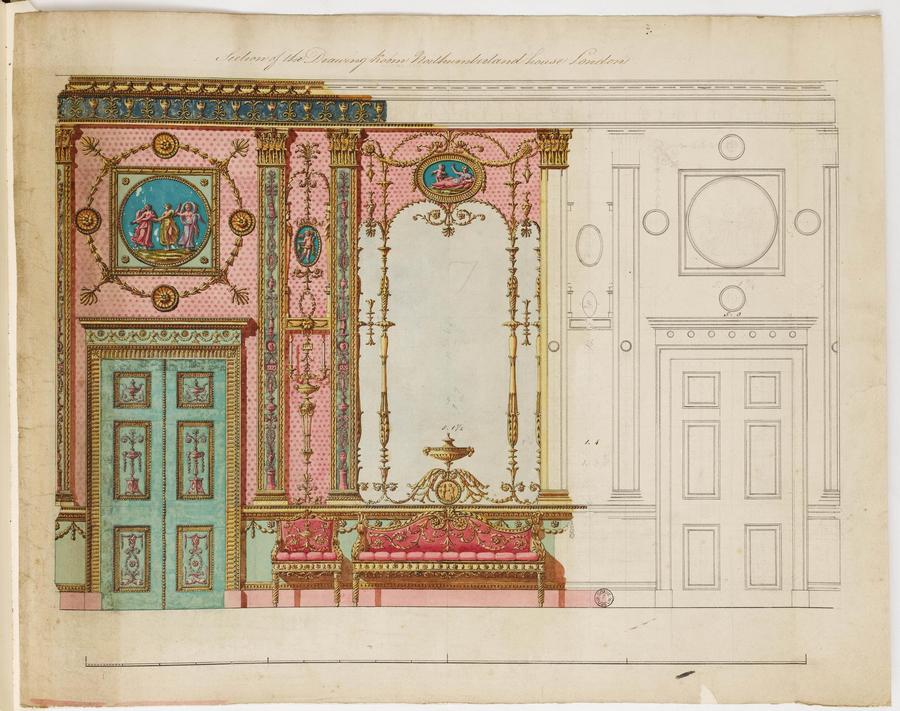
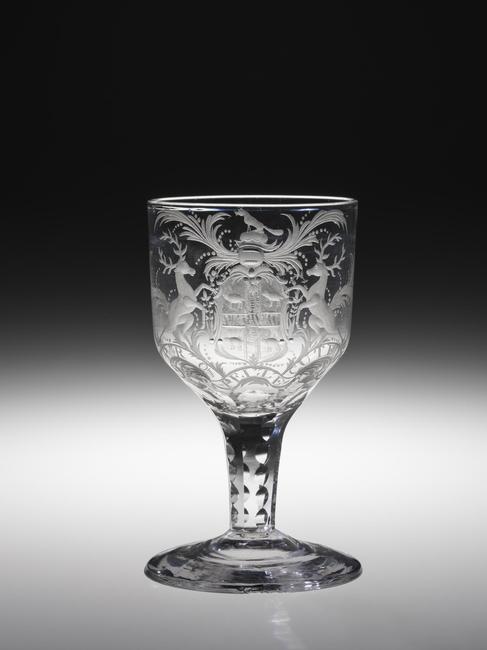
- Glass embroidered costume: a spectacular men’s coat intricately decorated with glass ‘jewels’ made in around 1780; a pair of women’s shoes covered in glass beads; shoe buckles set with glass paste jewels; jewelry and other accessories
- Cut glass lighting and tableware, all made possible through the perfection of British lead ‘crystal’ in the late 1600s and exported throughout Europe and the British colonies in America and beyond
- A number of large mirrors, which became the tell-tale sign of a fashionable interior, and reverse-painted glass meticulously decorated in China for the British luxury market
- Opulent glass dressing room accessories, including a magnificent gilded silver dressing table set, with a looking glass as its centerpiece, made in about 1700 for the 1st Countess of Portland; perfume bottles, patch boxes, and an exquisite blue glass casket richly mounted in gilded metal, used in the “toilette” a semi-public ritual of dressing which was adopted from France for men and women alike and became a feature of British aristocratic life in the 18th Century
- Artefacts of slavery, including glass trade beads, an iron manilla, a goblet commemorating the “African Trade” of the British town of Whitehaven, the logbook of a slave ship, and the deed of sale for a 16-year-old enslaved girl
- Objects connected to the British East India Company trade in China, including a reverse-painted glass picture of the foreign warehouses in Canton, cut glass tea caddies and a mouthpiece from an opium pipe mounted with carved glass
The Corning Museum of Glass is working with Cheyney McKnight, founder of Not Your Momma’s History, which works to educate and increase visibility of African Americans at historic sites around America, to more fully tell the story of glass and enslaved people.
Northumberland House Glass Drawing Room
Among the highlights of the exhibition are the original design drawings and glass panels from the glass drawing room at Northumberland House—the London residence of George and Elizabeth Percy, 1st Duke and Duchess of Northumberland, designed by celebrated British architect Robert Adam. Completed in 1775, the room was one of the most astonishing examples of plate glass in Britain during this period. Red-spangled glass, created by sprinkling copper flakes on the reverse side, lined the walls between the chair rail and the ceiling. Decorative pilasters of green glass were interspersed evenly throughout. Cast-plate mirrors, specially imported from the French royal factory of Saint Gobain at tremendous cost, also graced the walls of the room.
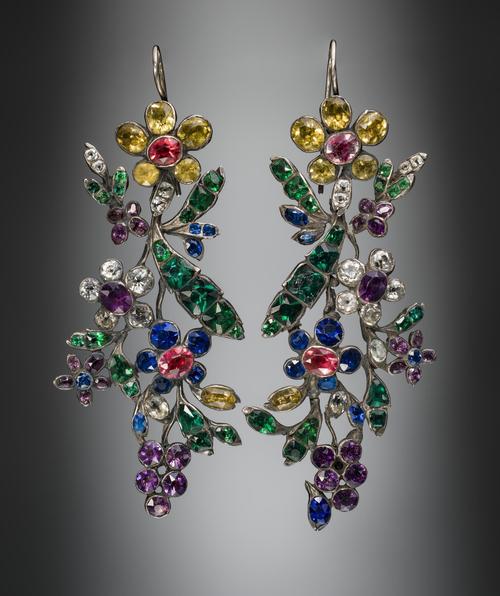
When the house was demolished in 1875, the glass panels were packed and eventually acquired by the Victoria and Albert Museum in London. CMoG has funded the conservation and reassembly of the panels remaining in storage at the V&A and will display them in the exhibition next to Robert Adam’s original design drawings on loan from the Sir John Soane’s Museum, London.
In partnership with CMoG, the digital experience designers and producers Noho and Makebelieve have created a virtual reality reconstruction of this now-lost interior. Incorporating new research conducted over the course of three years, the virtual room has been digitally modeled to be as accurate to the original installation of the room as possible. For example, each decorative pilaster in the room, decorated with carved and gilded wood, plaster, and lead ornament, has been individually recreated—rather than copy and pasted—to recreate the original handcrafted look. The room is also populated with historically accurate furnishings, many of which still exist in the collection of the current Duke of Northumberland, and some of which still had their original upholstery hidden under past refreshes.
Visitors to the exhibition will be able to interact with a touchscreen interactive version of the VR room (using disposable stylus pens) and will be able to toggle between daylight and candlelight. Tom Hambleton of Undertone music based in Minneapolis, MN has composed the music for the VR experience. CMoG plans to release the VR project for free through the Oculus App Store allowing anyone with a compatible VR headset to experience the Northumberland House Glass Drawing Room virtually, from anywhere.
Selldorf Architects Exhibition Design
The exhibition is designed by Selldorf Architects, a long-time collaborator with The Corning Museum of Glass. Central to this presentation of In Sparkling Company is a two-wall projection of the Vauxhall Gardens—an important entertainment venue in the 18th century, and the place to see and be seen. A cut-out in the projection will display a lavishly set table with glass tableware from the period. Above it, a pink neon sign reads “In Sparkling Company.” Designed and donated by FagSigns of Brooklyn, NY, it will evoke the excitement and fun of going to Vauxhall.
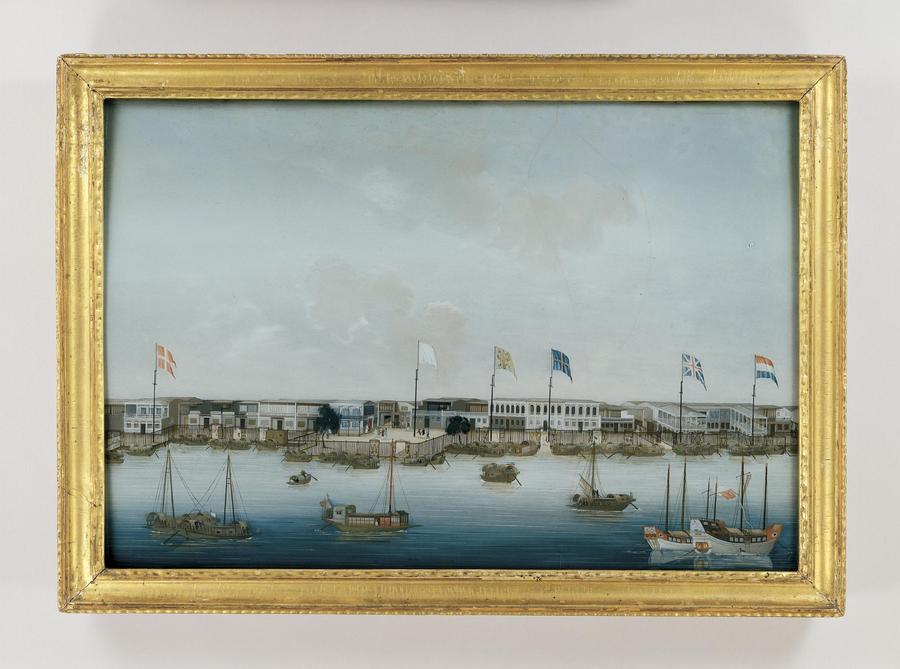
Hot Glass Collaboration
The elaborate table display on view in the exhibition entrance will be enhanced by glass versions of period-appropriate sweetmeats and sugar table decorations, including marzipan apples and pears; candied orange slices, violet petals, dates, cherries, and lemon peels; and aniseed and millefruit biscuits, along with syllabub, pistachio ice cream, and sugar plums. The creation of the lifelike glass desserts was led by accomplished flameworker Eric Goldschmidt, the Properties of Glass Program Supervisor at CMoG, with the skilled assistance of Flameworking Team Leader, Caitlin Hyde, who hand painted many of the delicacies. Goldschmidt and Hyde used 18th-century recipe books and other images to inform their work.
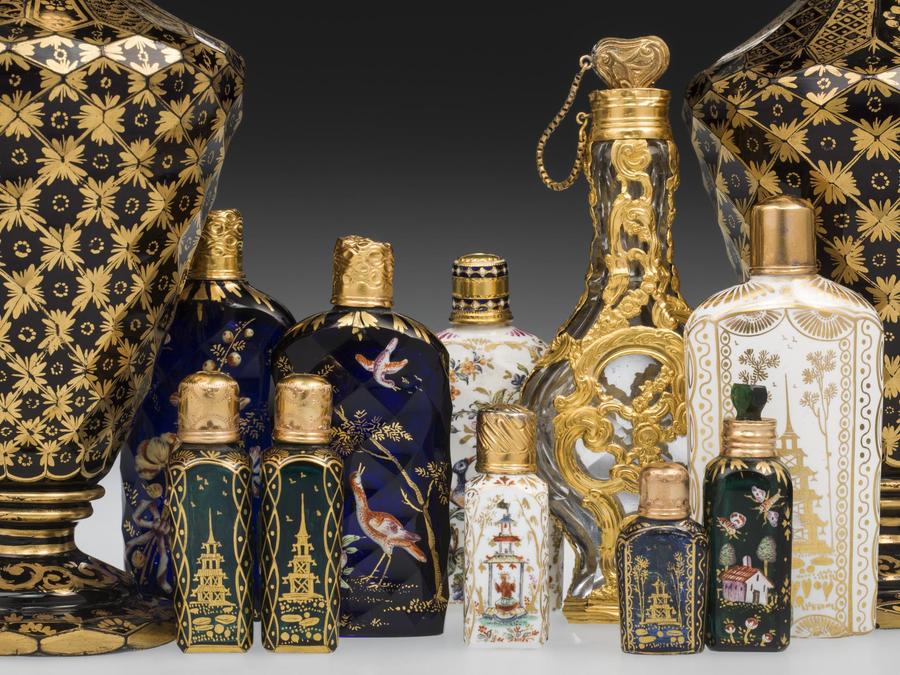
Eric Goldschmidt said: “While we have always tried to use our Hot Glass demonstrations to bring the museum collections to life, this is really the first time that we have fabricated works to enhance an exhibition in this way. Over the past several years, our demonstrations have really been used as more of an interpretation tool to help our guests gain greater insights into how objects in our exhibits were made. It is quite exciting for the Museum's glassmakers to have a hand in exhibitry in this way.”
Exhibition Loans
In Sparkling Company: Glass and the Costs of Social Life in Britain During the 1700s will include loans from: the Victoria and Albert Museum, London; Sir John Soane’s Museum, London; the Museum of London; the Fashion Museum, Bath; Royal Museums Greenwich, London; Los Angeles County Museum of Art (LACMA); Penn State University Library; and Cleveland Museum of Art.
Accompanying Publication
The exhibition is accompanied by a richly illustrated book of essays, In Sparkling Company: Reflections on Glass in the 18th-Century British World (The Corning Museum of Glass, 2020). Publication contributors include Marvin Bolt, Kimberly Chrisman Campbell, Jennifer Chuong, Melanie Doderer Winkler, Christopher Maxwell, Anna Moran, Marcia Pointon, and Kerry Sinanan with a foreword by Corning Museum Director Karol Wight.




















